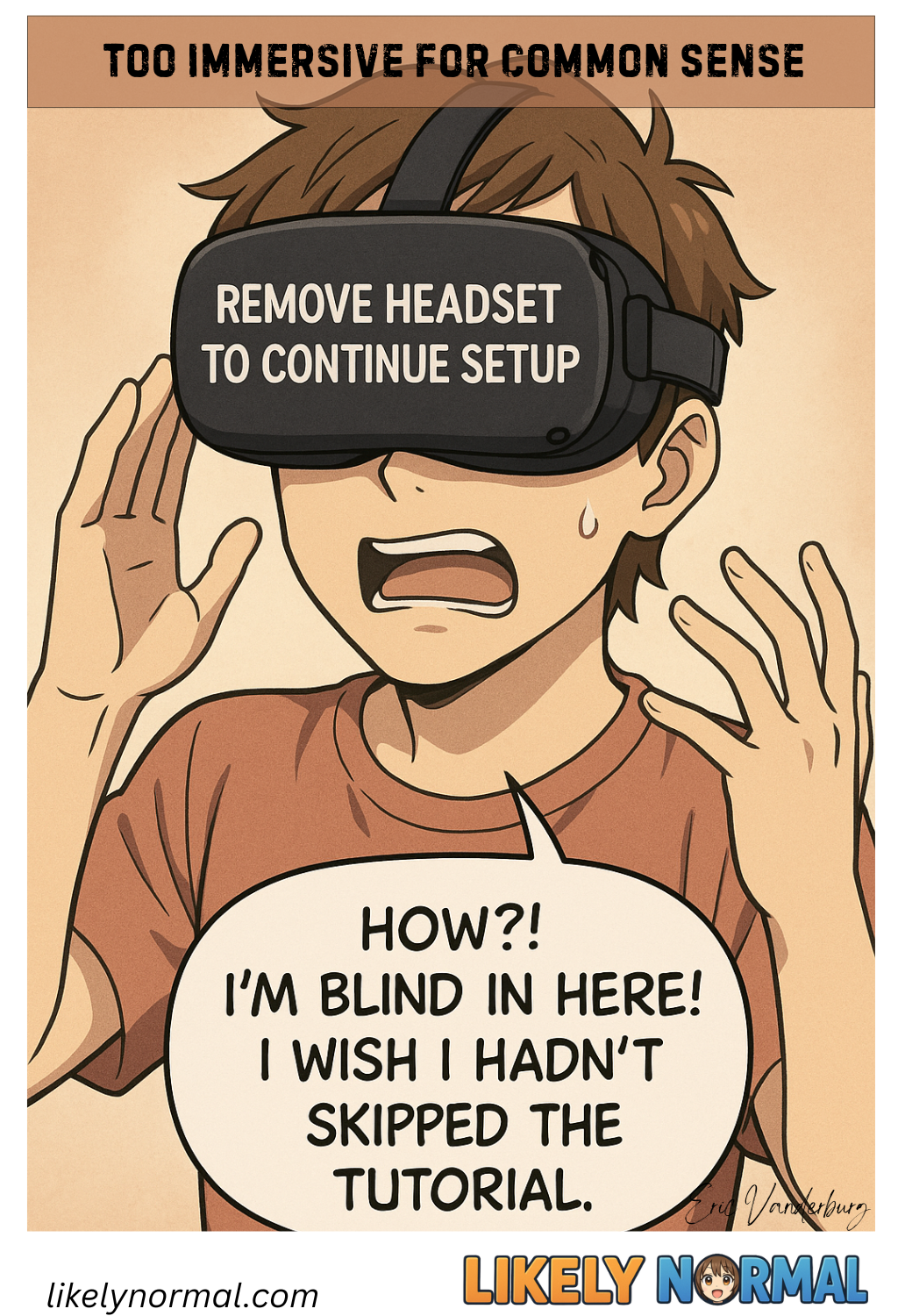Too Immersive for Common Sense
There exists a special breed of gamer so thoroughly consumed by their virtual escapades that basic life skills evaporate the moment the controller is in hand. These are the people who, mid-raid in World of Warcraft, will ignore a fire alarm because the loot drop is in 2 minutes. The ones who attempt to quick save before agreeing to a real-life plan. The legends who, when asked to pause a single-player game, stare blankly as if you’ve just requested they solve cold fusion.
But nowhere is this phenomenon more spectacular than in VR, where the line between reality and fantasy doesn’t just blur—it gets yeeted into the sun. You’ve seen it: that friend who becomes so immersed in Beat Saber that they forget how doors work, repeatedly face-planting into the wall like a moth convinced the exit is just a little to the left. Or the Half-Life: Alyx player who, after an intense session, tries to gravity glove their coffee mug off the table, only to spill it everywhere when their real hands fail to obey virtual physics.
Then there’s the headset hostage crisis—when someone gets so lost in VR that they forget they’re wearing a display strapped to their face. They’ll fumble at their temples like a confused cyborg, patting their own cheeks in panic while muttering “How do I see again?!” as if the off button is a mythical artifact. Meanwhile, bystanders watch in awe as this person, who can flawlessly execute a no-scope headshot in Call of Duty, becomes utterly helpless when asked to remove a glorified hat.
The real tragedy? These moments reveal our fragile grip on reality. One minute you’re a stealthy assassin in Assassin’s Creed, the next you’re trying to climb your fridge because your brain still thinks you have parkour abilities. You’ll catch yourself pressing an imaginary “skip dialogue” button during your boss’s lecture. You’ll absentmindedly reach for a “fast travel” option when running errands. And when you stub your toe, you’ll genuinely wonder why there’s no health bar depleting.

Discussion ¬